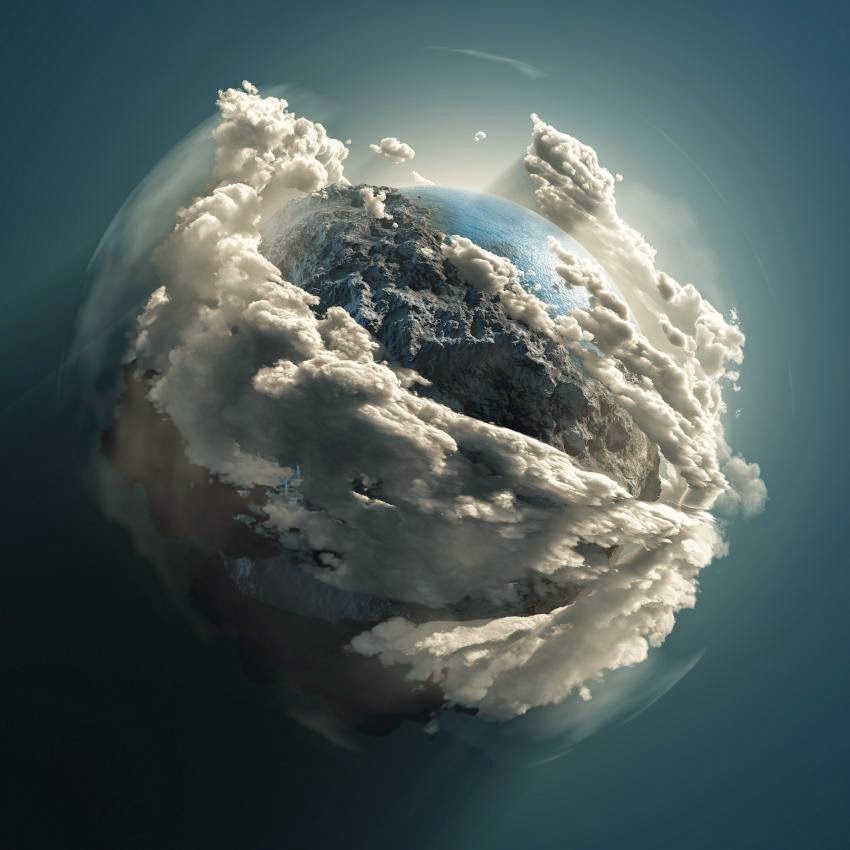
When the 1893 World’s Fair opened in Chicago, fairgoers aboard the world’s first Ferris wheel soared high enough to compare two cities: the White City—gleaming whitewashed architecture built for the massive fair—and its dark twin, the blackened, soot-stained buildings of the Loop just a few miles to the north.
Chicago, like many industrialized cities in the 19th century, lay under a thick layer of soot of its own making. Dirt from trains and factories soiled linen shirts and blew into homes past tightly shut windows. Across the Atlantic in London, residents lit lamps at midday to wade through pea-soup fogs, yellow with sulfur, that lingered over the city for days.
Nineteenth-century meteorologist Luke Howard called London “the volcano of a hundred thousand mouths,” referring to the city’s factories and engines that constantly exhaled soot, which is mostly made up of tiny particles of black carbon. Black carbon is released when things burn: coal and other fuels, bush fires, and the combustion that powers diesel engines and generators.
In the 20th century, scientists began to learn exactly how bad soot is for human health—it accelerates heart failure and burrows into lung tissue, aggravating asthma and respiratory conditions. More recently, scientists have started to realize that carbon particulates play a second unwelcome role: the second largest contributor to climate change.
Environmental regulations have helped to clear the skies over many cities. Yet the U.S., along with other countries around the world, still releases particles of carbon from trucks and generators, and we still don’t really understand what happens to it once it leaves the exhaust pipe.
But there is one bright spot in the study of soot. Unlike carbon dioxide, which will remain for hundreds of years, it can cycle out of the atmosphere within weeks. Whatever harm carbon particulates do to the atmosphere is temporary, at least theoretically. That is, if we could only stop.
“Changing habits is perhaps the most difficult challenge of all,” said Argonne scientist Rao Kotamarthi.
Carbon dioxide has long been established as the most notorious contributor to climate change. But aerosolized carbon particles floating around in the atmosphere also influence climate, although their combined effect is substantially more complex. For example, aerosols can scatter incoming solar radiation away from Earth—fling it back into space—which cools the Earth. Or they can absorb solar radiation, which contributes to global warming.
Though they by and large tend to absorb heat, carbon particles are big enough to serve as nuclei for cloud formation. And clouds reflect more sunlight, which cools the Earth. However, there’s some evidence that clouds formed around black carbon don’t last as long; the dark nucleus absorbs heat and evaporates the cloud.
Researchers try to understand this massive puzzle by building extremely detailed virtual models of the atmosphere. At Argonne, climate scientists like Yan Feng pack all the data they can get their hands on into an elaborate working picture of the atmosphere and how it behaves.
To make sure that the model’s analyses line up with the real world, scientists go through a process called “ground-truthing.” “We compare our model’s results to measurements taken at actual sites and see how they compare,” Feng said.
Once they know the model is reliable, Feng and her colleagues can run models forward in time to see what might happen in 10, 25, 100 years, depending on whether we cut aerosol emissions or let them run wild.
“It’s an extremely complex puzzle, but we can address it by looking carefully at problems one by one,” said Rao Kotamarthi, who manages a climate modeling program at Argonne.
Carbon aerosols are in some ways more difficult to model than carbon dioxide. Whereas carbon dioxide spreads fairly evenly around the world, black carbon tends to affect weather more locally. Carbon particulates often linger in the same region where they are emitted because the particles are too heavy to mix into the atmosphere but not as easily washed out in raindrops as other aerosols. A lot of carbon aerosol modeling, therefore, relies heavily on meteorology: charting the local ebb and flow of wind and water and temperature to map how the particles travel. “For example, large-scale meteorology, like a big cold front, can wipe out some of the carbon’s effects—but not all,” Feng said.
In the past few years, Feng has turned her attention to a second type of carbon in the atmosphere, called brown carbon. These are organic particles with different chemical compositions; they can be tar balls or fats. Long, smoldering fires give off brown carbon; hot fires release black.
There’s a lot more brown carbon in the atmosphere by mass, but it can’t trap as much heat by mass as black carbon—”Think of wearing a black shirt in the sun,” Kotamarthi said—so it’s largely been overlooked.
Only recently have researchers at Argonne and elsewhere begun to explore brown carbon’s effects and habits more closely. “We have a little idea of how black carbon behaves,” Feng said. “But brown carbon was only identified as a potentially significant factor in the past several years.”
Feng, along with Kotamarthi and Professor V. Ramanathan at the Scripps Institution of Oceanography, recently published the first global model study to estimate how much heat brown carbon traps in the atmosphere. “Our model shows how carbon is distributed across the atmosphere,” she said. “We can use that to predict how much solar radiation is being trapped in the atmosphere, and from that we can estimate how much the global temperature may rise.” Feng thinks that brown carbon could turn out to be a significant factor in how aerosols affect Earth’s climate.
There are still a lot of uncertainties in the model, though. “Getting more data is the biggest problem,” Kotamarthi said.
That’s where Argonne environmental scientist David Streets comes in. Streets specializes in collecting data on emissions; he modeled Beijing’s air quality before it hosted the 2008 Summer Olympics. In 2005, along with Professor Tami Bond of the University of Illinois, he published the gold standard figures for soot sources now used by modelers around the world.
“We tell them what’s being emitted into the air,” Streets said. “They use meteorology to get where it winds up and how it affects weather and climate.”
To ensure the accuracy of his data, Streets works with collaborators all over the world, including rapidly industrializing countries like China and India.
Climate modelers also keep an eye on a number of different global economic indicators, because the health of the world’s economies significantly affects emissions. In 2008, scientists saw the economic crash written out in the sky. Aerosols dropped noticeably. The skies cleared over Greece in 2010 as the debt crisis squeezed its citizens below.
This is a central reason why aerosol emissions control is so hard. Carbon, like carbon dioxide, tends to ride piggyback on economic development. In particular, developing countries—where the electricity sometimes goes out because the power infrastructure hasn’t quite kept up with demand—tend to rely heavily on diesel generators. They produce a lot of black carbon.
And aerosols are a major human health problem in developing countries. The World Health Organization puts smoke from solid fuels as the 10th major mortality risk factor globally; it estimates that smoke contributes to approximately two million deaths annually, particularly affecting women and children. Urban air pollution ranks among the top 10 risk factors in middle and developed countries too.
We’ve succeeded in reducing emissions from factories and other sources in developed countries like the U.S. and Europe; in many places, black carbon emission levels are lower than they’ve been in decades, if not centuries. In Chicago, cleaners scrubbed a century’s worth of soot off several buildings in the Loop to discover stone and brick underneath in shades of delicate pastels that probably hadn’t been seen since the last tourists left the World’s Fair more than 100 years ago.
“Purely from a technical standpoint, we could do this,” Streets said. “We have the technology.”
Note : The above story is based on materials provided by Argonne National Laboratory









